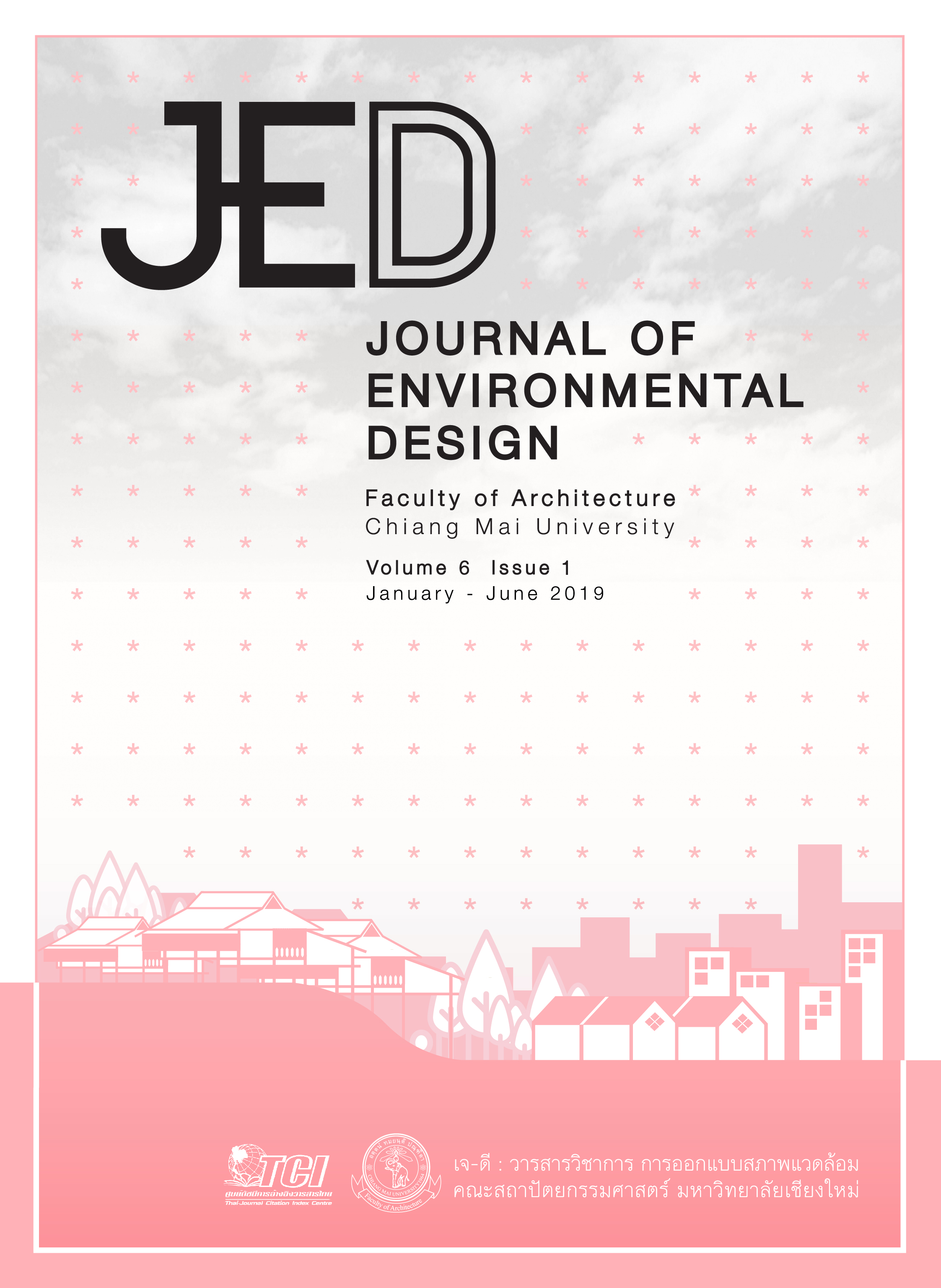searching process for social and cultural identities for contemporary design: case studies of wooden row houses along Amphawa Canal
Main Article Content
Abstract
Many countries have started to identify their unique cultures by scrutinizing their traditional rules and values. Such identification of the cultural uniqueness has a direct impact on the work of contemporary-interior design. Interior environment in each region reflects perceptions, behaviors and specific solutions to the natural environment that form the
regionally specific culture. Regarded as accumulated wisdoms of the ancestors, local
socio-cultural Identity is an essential element that should be accounted for in the interior design process. Gaining more recognition of the local socio-cultural identity imprinted in the interior design can bring sustainable benefits concerning economy and culture of
communities. In this work; therefore, we present the searching for social and cultural
identities for using in the interior design. Design management efforts involve long-term work in the background and involve different environmental design that expresses local
socio-cultural identity as one of the significant competitive priorities for increasing the value and a better visualization of the communal identity. From a quality management perspective, the speed of design and the interior environmental design indicate the
importance of design quality in inheritance and conservation issues because design efforts often have inherent drivers for people’s perception through an optimized design. The
researcher selected “Amphawa Floating Market and Community” in Samut Songkhram province to be a case study of a community where travel itineraries were managed in the form of creative tourism or local tourism. By scoping only on the part of building community and uniqueness of Amphawa floating market which is called the wooden row house along Amphawa Canal.
Article Details
References
Krukaset, P. (2011). Patjai kamnot saphabwaetlom tang kaiyaphap dan karn khai tee sue ekkalak khong sinkha tee ing naewkid dan karn anurak singwaetlom. (In Thai) [The physical sale-environment attributes determining the identity of merchandize embedded with environmental consciousness concept] (Doctoral dissertation). Bangkok: King Mongkut’s Institute of Technology Ladkrabung.
Krukaset, P. (2018). Floor plan-analysis, lighting and physical environment of classroom design. Proceeding of the 2018 International Academic Research Conference, (pp.84-90). Vienna, Austria: ICBTS Conference & Publication.
Meak-on, S. & Bejarananda, M. (2013). Phonkrathob karn thongthiao tor atta lak chumchon: Koranee sueksa chumchon laeng thongthiao Amphawa. (In Thai) [Tourism impact on community indentity: case of Amphawa community]. Built Environment Inquiry Journal, 12 (2), 1–19.
Seyanont, A. (2009). Karn pongkan karn sueamsom lae karn anurak sabphayakon thammachat lae singwaetlom khong talatnam Amphawa. (In Thai) [The prevention of deterioration and natural resources and environmental conservation of Amphawa floating market]. University of the Thai Chamber of Commerce Journal, 29 (4), 163-172.
Torrent, R. R. (2008). Sustainable development in tourism municipalities: the role of public goods. Tourism Management, 29 (5), 883-897. DOI: 10.1016/j.tourman.2007.10.004


